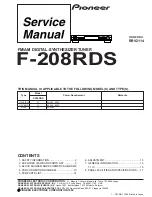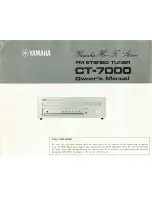
intermediate
frequency
(if) width
mono/stereo
when receiving
fm
The
MODE
controls help you to get the best sound from weak
radio signals. The display shows the currently selected mode
settings, which you can change by pressing one of the
MODE
buttons.
Each broadcast station uses a small range of frequencies either
side of its nominal frequency. This spread is known as the
modulation bandwidth. As long as you have a strong signal, with
sufficient frequency separation from other stations, you will get
the best sound quality, best stereo separation (in FM) and lowest
distortion with
if width : wide
(if narrow indicator is not
illuminated)
(1)
. When stations are close together, their bandwidths
may overlap and cause interference which affects the sound
quality. If this happens you should switch to
if width : narrow
,
which is indicated by the
if narrow
indicator being illuminated.
Press
if width
to toggle between both settings. For best sound quality
the
if narrow
indicator should be off.
To listen to high-quality sound in stereo, you need a strong enough
FM signal. If the signal is too weak, the sound in stereo mode will
be distorted, with high background noise. If the display shows
stereo
but the signal is too weak, press the
mono
button/key, so
that the display shows
mono
. Although the stereo effect is lost, the
sound quality is improved.
25
mode controls
1. The ‘if width’ and ‘muting’ modes (see next page) work on FM , MW and LW only
M O D E
mono
muting
if width
hi-blend
muting
mono
if width
hi-blend
M O D E
mono
muting
if width
hi-blend
muting
mono
if width
hi-blend
if narrow
*LASER*-T32R Manual v3.7x 8/29/02 12:14 PM Page 25
















































